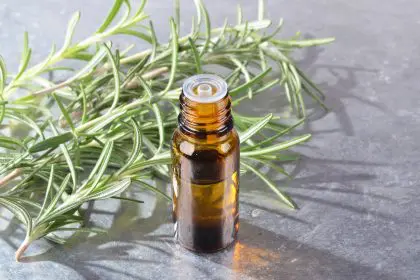Revolutionary research reveals optimal protein timing for maximum muscle growth

The science of muscle development
Building muscle is a multifaceted process that requires more than just lifting weights. To achieve optimal muscle growth, it’s crucial to understand the intricate balance between proper nutrition, protein intake, and effective training strategies. Recent research highlights the essential role of protein in muscle development, demonstrating that muscle growth occurs only when the body’s protein synthesis exceeds protein breakdown. Understanding how these mechanisms work will set you on the path to better results.
Breaking down muscle biology
Muscle development, or hypertrophy, is triggered by a series of biological events. It all starts when muscles experience microscopic damage during resistance training. This damage is essential for stimulating muscle growth and is followed by a series of physiological responses aimed at repairing and strengthening the muscle fibers. The process involves:
- Microscopic damage to muscle fibers: This occurs during weightlifting or any resistance-based exercise. The damage triggers a repair process.
- Protein synthesis activation: After the muscle fibers are damaged, protein synthesis is activated to repair the fibers and build new tissue.
- Cellular repair and growth: This is where muscle fibers grow back stronger and larger than before, a phenomenon known as hypertrophy.
- Structural adaptation: Over time, muscles adapt to stress, increasing in size and strength.
- Enhanced strength development: As the muscle fibers repair and grow, they become capable of handling more weight, contributing to improved strength.
Protein requirements for growth
Protein is at the center of muscle development. Scientific evidence supports that proper protein intake is crucial for both muscle preservation and growth. Here’s a breakdown of protein requirements for different stages of muscle building:
- Maintenance requirements: The body requires about 0.35 grams of protein per pound of body weight daily to maintain muscle mass. This is the bare minimum to prevent muscle loss.
- Growth requirements: For muscle development, protein intake should increase to about 1 gram per pound of body weight. This amount supports the building of new muscle and aids in recovery after intense workouts.
Nutritional framework
Supporting muscle growth goes beyond just protein. The body needs a well-rounded nutritional approach to ensure it has all the necessary building blocks. A proper diet can be broken down into two key components:
- Caloric surplus: To build muscle, you need to consume more calories than you burn. Aim for an additional 350 to 500 calories per day from clean, nutrient-dense sources. This provides the energy needed for both training and muscle repair.
- Macronutrient distribution: It’s not just about protein; carbohydrates and fats also play crucial roles in muscle growth. Complex carbs provide sustained energy for workouts, while healthy fats support hormone production and overall health.
Protein timing strategies
To maximize muscle growth, the timing of your protein intake is as important as the total amount you consume. Distribute protein throughout the day to optimize absorption and support muscle repair during critical periods.
- Daily distribution: Aim to consume protein in multiple servings spread across your meals. This approach ensures a steady supply of amino acids to the muscles throughout the day.
- Post-workout nutrition: The post-workout period is critical for muscle recovery. Aim to consume a protein-rich meal or shake within 30 to 60 minutes after training to maximize muscle protein synthesis.
- Quality considerations: The type of protein matters too. Complete proteins, which contain all essential amino acids, are particularly beneficial. They’re found in animal products like meat, eggs, and dairy.
Protein source selection
Protein sources come in many forms. Choosing the right types can make a significant impact on your muscle-building journey. Both animal and plant-based options offer unique benefits.
- Animal sources:
- Lean meats such as chicken and turkey
- Fatty fish like salmon and mackerel
- Dairy products like yogurt and cheese
- Eggs, which are a complete source of protein
- Plant sources:
- Legumes and beans, such as lentils and chickpeas
- Whole grains like quinoa and brown rice
- Soy products, including tofu and tempeh
- Nuts and seeds, which provide additional healthy fats
Training integration
While nutrition is essential, your training program must also be aligned with your muscle-building goals. Resistance training is the key to stimulating muscle growth.
- Resistance training: Focus on progressive overload, which involves gradually increasing the weight or resistance you lift. Include compound movements like squats, deadlifts, and bench presses, as they target multiple muscle groups and promote overall growth.
- Exercise selection: Incorporate a mix of multi-joint exercises for overall muscle development and isolation movements for targeting specific muscles. Always maintain proper form to prevent injury and ensure you’re working the muscles effectively.
Recovery optimization
Muscle growth doesn’t happen during your workout—it happens during rest. Recovery is just as important as training. Without adequate recovery, you risk overtraining and muscle breakdown.
- Sleep quality: Aim for 7 to 9 hours of quality sleep each night. Sleep is when your body repairs muscle fibers, and sufficient rest improves strength and performance.
- Stress management: High stress levels can impede muscle recovery and growth. Engage in active recovery practices, such as stretching, yoga, or meditation, to reduce stress and promote healing.
Progress monitoring
Tracking your progress ensures you stay on course and can make necessary adjustments to your training and nutrition.
- Physical measurements: Regularly assess body composition, strength gains, and visual progress. Monitoring changes helps you evaluate whether your current plan is effective.
- Nutritional tracking: Keep track of your protein intake, caloric consumption, and meal timing. Using apps or food logs can help ensure you’re hitting your nutritional targets.
Implementation strategy
To succeed in muscle building, create a structured plan that incorporates both nutrition and training.
- Initial assessment: Determine your current fitness level, dietary patterns, and available time for training. Set clear, achievable goals to guide your progress.
- Program design: Develop a balanced training schedule that aligns with your goals. Plan meals around your protein requirements and ensure your recovery practices are in place.
- Long-term success factors: Building muscle is a long-term commitment. Stay consistent with your training and nutrition, and make adjustments as necessary. Incorporate progressive overload into your training to continue challenging your body.
Long-term success factors
Muscle building is not a short-term endeavor; it requires consistent effort over time. Focus on maintaining your progress and adapting as you go.
- Consistency: Regular training, adherence to your nutritional plan, and consistent sleep and recovery are the keys to long-term success.
- Adaptation: As your muscles grow, your body will adapt to the demands placed on it. Continue to challenge yourself with progressive overload, adjust your nutrition, and vary your program to prevent plateaus.
Building muscle is a dynamic and challenging process, requiring a balance of nutrition, training, and recovery. By focusing on proper protein intake, effective training strategies, and recovery, you can unlock your full muscle-building potential. Stay committed, track your progress, and continue to refine your approach to see long-term results.















